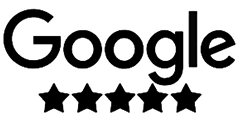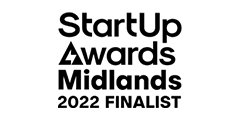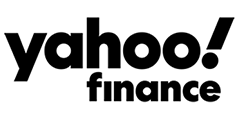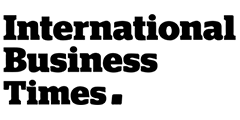
April 4, 2021
By
Kamran Awan
Category
Business
We have all heard the saying, ‘work smarter and not harder’, and this is true for all businesses. As business owners or aspiring business owners, we often like to take a look at the bigger picture and set goals and objectives. These objectives are broken down into smaller tasks which make them more manageable over time.
However, when most people think about a business they usually focus on things like products, services, customers, marketing as well as hundreds of other considerations. One area that doesn’t get much air time initially is the billing process and how this can impact your business.
The tendency is for business owners to think about the billing process once they are close or have signed up their first customer. While we understand this rationale, in our opinion it’s important to put the right processes in place before you start and focus on the core areas of your business.
Getting paid and on time is integral to every business. Spending money and time on marketing, sales, meetings etc will all yield conversions. But if the billing process is not clear, simple and frictionless, a lot of the hard work can be undone very quickly.
Therefore, in this weeks blog we wanted to shine some light on the billing process and consider whether you should automate your billing process?
One time or recurring?
When it comes to billing a client, you need to consider how often you are billing your client. For example, here at iOB Business, when our partners provide any of our technology solutions to local businesses, they charge an onboarding fee (one time) and a monthly fee.
In the modern business world, many companies realise the importance of charging clients an ongoing fee which could be for support, consultancy or as a retainer fee. Building up recurring revenue or residual income is great as it compounds month on month and alleviates the pressure of securing new clients every month.
When it comes to billing, if you are charging your client an upfront fee and a monthly fee, you should aim to have a process in place that makes it quick and easy for your client to pay you. Initial fees are usually a manual process whereby the client will pay you using a debit card, bank transfer, cheque or even cash.
The part of the process that can be automated is the recurring or monthly fee which should always be set up as part of the onboarding process. For instance, think about a common purchase that we are all familiar with such as car or home insurance. At the time of taking out our policy, we often pay an initial fee and then agreed to monthly instalments via direct debit. This is an example of an automated process as we don’t manually need to settle our fees each month.
As a business owner, you should aim to automate as many aspects of your business as possible so you can focus your time and effort on revenue generating activities that will help your business grow.
Collecting payments manually
For certain industry sectors, such as retail or construction, manual payments are the norm as customers will pay for the products or services at the time of purchase and generally there’s no ongoing cost.
However, for businesses that are looking to build recurring revenue, some do still opt for a manual payment collection process. This is often the remit of an accounts department or credit control department that will manually raise invoices and then chase payment.
While this can be effective, it’s not the best use of time or resources. Chasing up clients every month to settle invoices can cause a delay in payment collection as well as increase the number of clients that default on the sum they owe (bad debts).
When you try to collect payments manually, you need to dedicate a team member to raise invoices and make multiple contact attempts via telephone/email before a payment is settled. This is a drawn-out process that is not aligned to helping your business grow as rapidly as possible.
Aside from the time and cost element, it’s also not hugely effective as clients may ignore contact attempts or simply delay payment for as long as possible. Most things in a business are interconnected, especially when it comes to revenue, therefore it’s important that you try to establish solid processes from day one.
How can you automate your billing process?
There are lots of companies online that specialise in helping businesses automate their billing process. While most companies initially contact their banking provider, there are often cheaper and more accessible providers online.
For example, companies such as Stripe, PayPal and GoCardless all have recurring payment options that you can use to automate your billing process. While the transaction fees do vary from company to company, in the long run they will save you a lot of time and money in comparison to a manual process.
The way automated billing works is once you have signed up a client, you can generate something called a ‘pay link’ through Stripe, Paypal or GoCardless which details the amount you wish to collect from the recipient. You simply forward this pay link to your client as part of the onboarding process and they will input their bank/card details before confirming.
From this point onwards, on the nominated collection date, your automated billing provider will collect the monthly fee from your client and then deposit this into your account, minus their fee. This is all done without any manual intervention from either yourself or your client. If a payment fails, your automated billing provider will notify you and this is where you can reach out to your client to investigate further.
Having an automated billing process set up from day one ensures that your business is ready to start accepting clients immediately without trying to allocate vital resources to this part of your business.
Aside from payment collection, another benefit of automated billing is the ability to link payments to accounting software and also a customer relationship management (CRM) system. By integrating your accounting system (where you raise invoices) to your automated billing solution (how you collect payment) and back to your CRM (where you store customer data), you can have a holistic view of every client within your business.
This is something that we also cover in more detail during our initial training programme for new partners that launch their Digital Agency with us.
Summary
As we have seen throughout this weeks blog, there is a huge case for automating your billing process as it can save you time, money and resources in the long run. Automation frees up capacity to focus on revenue generating activities and also makes it frictionless for your clients to work with you.
By automating your billing process, you are well on the way to establishing the right foundations for continued and long term success for your business. With so many recurring payment solutions available online, there has never been a better time to investigate this further.
To find out more about how you can launch a Digital Agency and implement the right processes from day one, please contact a member of our team.
Until next time, take care.
Share this Post






















